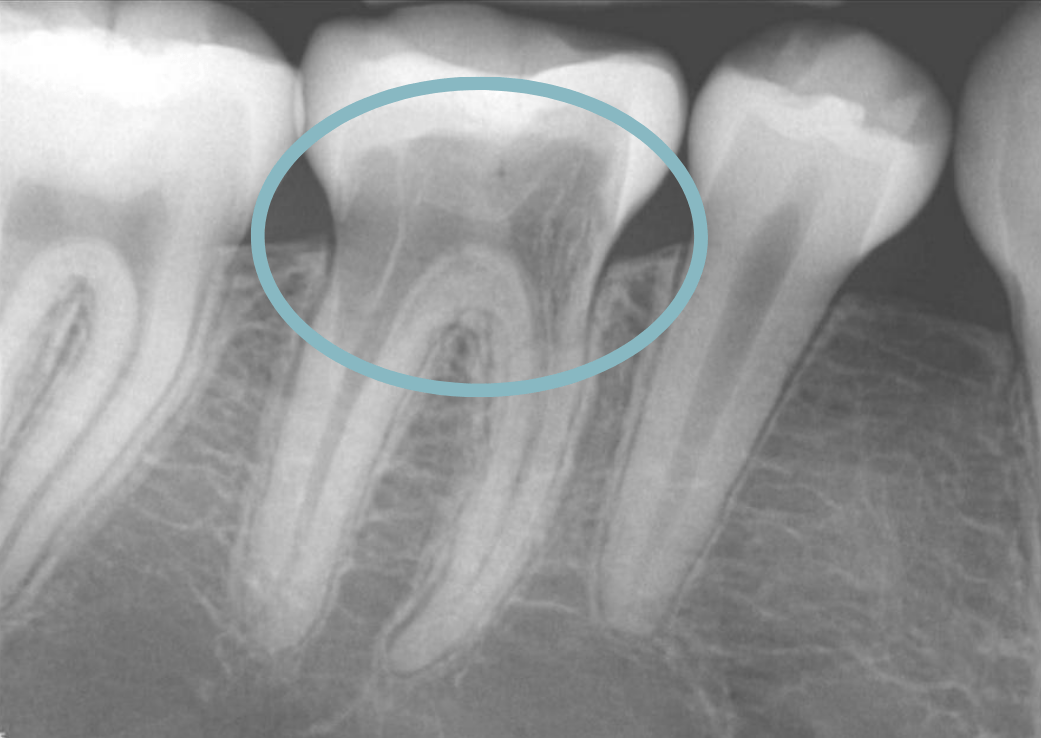Resorption is the process by which a material is reabsorbed. When it comes to your teeth, this process occurs when the dentin or cementum (outer) layers begin to be absorbed by the body.
Most often, resorption is caused by injury to a tooth. This could be from a cavity-related injury or physical trauma. There are two different types of resorption, internal and external. They can be hard to distinguish, but it is important for us to determine this in order to give you a more accurate prognosis for the tooth.

Root resorption as evidenced on a dental x-ray; courtesy of Spear Education.
Internal Resorption
Within the tooth, as the name implies is where internal resorption begins. Specifically in the nerve chamber. If caught in the early stages and the tooth has a good prognosis, root canal therapy would be the treatment of choice.
The aim of a root canal is to remove the remaining vital tissue that may be sustaining the resorptive cells. If the resorption is purely internal the tooth often has a good prognosis after treatment.
External Resorption
If external resorption is suspected the prognosis is usually not good. Each tooth is surrounded by periodontal ligaments. This is the group of ligaments that joins the outer layer of the root [cementum] to the bone supporting the teeth. External resorption most often occurs when trauma is inflicted on the periodontal ligament. Because it is not damaging the internal tissue, a root canal will not treat the problem. Depending on the severity of external resorption, extraction may or may not be advised.
Tooth Resorption Overall is Pretty Rare
The good news is that tooth resorption overall is pretty rare. So don’t start worrying about your teeth resorbing just yet.
It is also usually asymptomatic for many years, and may only be detectable on an x-ray. In the case of external resorption, a wait-and-see approach may be taken, whereas early root canal therapy may stop the progression of internal resorption.
If you have had a traumatic physical injury to a tooth, it’s a good idea to let your dental professionals know and keep an eye on the tooth to catch any early signs of resorption. As always, please feel free to ask if you have any additional questions at your next visit.
References
Colgate:
https://www.colgate.com/en-us/oral-health/conditions/immune-disorders/what-is-tooth-resorption-
Internal resorption: an unusual form of tooth resorption:
https://www.ncbi.nlm.nih.gov/pmc/articles/PMC4920650/
Tooth resorption part II – external resorption: Case series:
https://www.ncbi.nlm.nih.gov/pmc/articles/PMC3659868/
Faster, better, and more comfortable care is available at Dental Care Of Sumner. We truly live up to our name with an office packed full of advanced technology and a team who is helping move dentistry into the 21st century.
